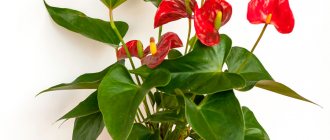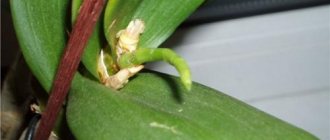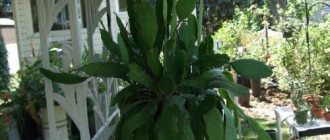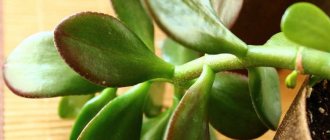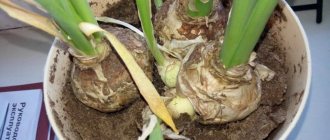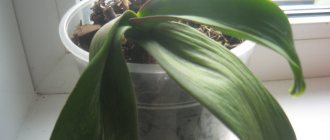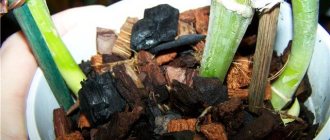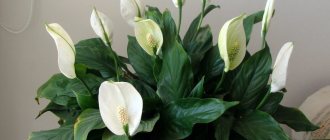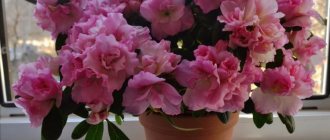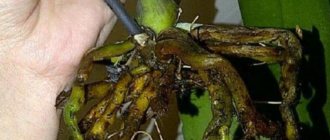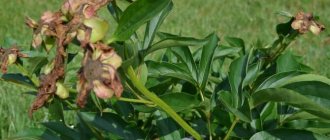Why doesn't indoor jasmine bloom?
The reason for this is one of the factors or a combination of them:
- Violation of the thermal regime. If the room temperature is above 24 degrees or below 14, lush flowering will not be achieved. The buds will either fall off immediately after ovary, or will not be able to set at all. To avoid such moments, restore the required temperature to 15-22 degrees. Based on the specific case, you will need to either shade the plant from excessive light and move it away from heating devices, or, conversely, place it closer to the sun.
- Lack of humidity. Jasmine dries, its leaves begin to curl, deform and fall off. You will need more frequent, but not too intense watering (every 1-2 days in summer, twice a week in winter) and air humidification. You should not spray the leaves.
- It happens that buds appear on the bush, but subsequently fall off. The florist is tormented by the question of what happened to his jasmine, but all he had to do was increase the lighting. The first buds form at the end of winter. During this period, it is transferred to a warmer and brighter place. At the same time, you should not place a pot of jasmine directly on the windowsill above the central heating radiator, otherwise you will not be able to enjoy the fragrant flowering. Place the flowerpot in a well-lit room with diffused light, watch the soil - it should not dry out. Spray the air around the jasmine with water every 2-3 days and soon you will be able to enjoy flowering.
- Hard water. If you use tap water for irrigation, then you should not be surprised why there is still no flowering. The way out of the situation is to let the water for irrigation sit for at least 2 hours or use rainwater. Filtering the water won't do anything.
- Soil acidity. Jasmine can grow beautifully, reach luxurious sizes, but never bloom just because the soil in which it grows is completely unsuitable for this. This shrub does not like neutral and alkaline soils. Transplant your jasmine into a different soil mixture: mix turf soil, sand and leaf humus (3/1/1) or purchase special acidic soil from a herbal store.
- Incorrect landing. If the neck of the trunk is buried more than 3 cm into the soil, there will be no flowers on the jasmine. Replant your flower so that the section of the trunk where the plant's roots begin is on the surface.
The correct regime is necessary not only for the luxurious flowering of jasmine. These are important conditions for the life of the plant, including growth and development.
Bloom
Jasmine is a plant that loves warm climates. Therefore, on personal plots, it can only feel good in the area that has it. But don't despair if you're not a South Side resident. The plant can be safely grown indoors and enjoy its decorative appearance and aroma.
The flowering of jasmine depends on its variety. The first planted shrubs will begin to please you after the second year of growth, but only with good care and constant feeding. It often happens that owners cannot wait for jasmine to bloom for a long time. Let's figure out why indoor jasmine doesn't bloom? What should be done in this case?
The lack of flowering can be due to various reasons. Let's consider the main ones:
- The flower was planted incorrectly. If planted correctly, the trunk recess should be no more than 3 centimeters. The plant has part of the trunk with the root system on the surface.
- Failure to maintain the correct temperature. The temperature for good growth of jasmine should be between 14-24 degrees.
- Poor hydration. Jasmine loves regular watering, but within reasonable limits, without flooding. In winter it is reduced to twice a week.
- Bad light. The flower should be in a bright room without direct exposure to sunlight.
- Highly hard water. Jasmine should not be watered with tap water. It must stand for at least two hours. Filtered water is also not recommended.
- Correct soil mixture. Jasmine needs soil, which consists of turf soil, sand and humus. The plant does not like neutral and alkaline soil.
It happens that you follow all the care rules well, but flowering never occurs. Inspecting the plant for pests will help you figure out why jasmine does not bloom.
Plant pests can attack a flower if it is poorly cared for. They also move onto them from other infected bushes nearby. Before bringing a new flower into your home, always inspect it to ensure it is not infested with pests. Otherwise it may be dangerous for your pets.
Whitefly, leaf weevil and spider mite can affect the growth and flowering of indoor jasmine. Thus, whitefly larvae like to be on the underside of leaves. They feed on the cell sap of the plant and leave behind unsightly marks. As a result, the leaves begin to dry and curl, then completely fall off, and the flower is covered with a large number of white midges.
Jasmine pests - who are they and how to deal with them?
When indoor jasmine grows and develops normally in your home, it is practically not afraid of diseases. Pests cause much more problems. They can start either as a result of failure to care for shrubs, or they can move from other plants in the house.
Carefully! A beautiful flower brought home can destroy all the nearby flowers. Be attentive to the copies you buy, carefully choose where to sell!
The appearance of pests on a plant can lead to its death. More often than others, indoor jasmine is attacked by spider mites and whiteflies.
Whitefly larvae, green in color, cling to the leaves from the underside. They suck out the cell sap, leaving behind sugary particles. Whitefly-infected leaves begin to curl, then turn yellow and fall off. Large colonies of small white midges accumulate on the plant.
Preparations sold in flower shops are successfully used against whiteflies. The most effective:
- Actellik – 1 ml of the drug per 500 milliliters of settled water,
- Intavir in the same proportion
- Agravertine from 1 ml to 1.5 ml of product per 500 milliliters of water.
The web that red mites form is also a negative sign. They are located in the internodes; whitish grains of excrement are deposited on the back of the leaves. In this case, the jasmine leaves actively turn yellow and fall off. To combat this parasite, a soap solution prepared according to the above recipe is also suitable. If the plant is severely affected and the solution does not help, then you need to spray the jasmine twice a week with an aqueous solution of 0.15% Actellik (dilute 1.5 ml of insecticide in 1 liter of water).
Another insidious pest of indoor jasmine is the green leaf weevil. Its larvae settle on leaves, feeding on their sap. Due to their vital activity, abundant leaf fall is observed. This can lead to drying out of the entire bush. To combat this parasite, the same insecticides are used as for the above-mentioned pests.
Aphids are very annoying to indoor jasmine. It entangles the tops of the bush with a thick white cobweb, the places where new leaves are formed. As a result, the growth rate slows down significantly. Without proper care, the plant may stop developing and dry out. You can fight aphids using chemicals, for example, Iskra Bio 2 ml per liter of water.
Pest control at home
If you do not want to use chemicals, then it is permissible to use safer methods to combat parasitic insects. They are effective when the number of insects and the plant area affected by them are small.
You can wash the leaves with a solution of water and laundry (brown) soap (1 half tablespoon of soap grated on a coarse grater per 2 cups), the solution should be at room temperature. Such measures give positive results in the fight against ticks and whiteflies.
You can defeat aphids and weevils using an infusion of potato tops. Place 2 kg of fresh potato tops in a ten-liter container with water and leave for 10 days. Then the resulting infusion is filtered and sprayed with jasmine leaves every 5 days, no more than three times.
With proper care, indoor jasmine will become your favorite and a real pearl of your flower collection. But because of the heady, rich aroma, beware of installing it in the bedroom and children's rooms.
Why doesn't jasmine bloom? We learn how to care for a flower correctly and trim it in spring and autumn
Indoor jasmine is an incredibly beautiful plant, on which small white or pale pink buds bloom with the onset of spring. This flower is known not only to flower growers. Almost everyone has drunk jasmine tea at least once in their life, which has the aroma of the plant’s buds. However, jasmine is a rather finicky plant that requires certain maintenance conditions, pruning and replanting. We will tell you in detail about all the intricacies of caring for a jasmine bush in our article.
General information about the flower
In the middle zone, jasmine is grown exclusively as a houseplant. Since these liana-like shrubs are not frost-resistant and hardy in our conditions.
When choosing a support for a flower, it does not have to be large
To grow indoor jasmine, arches and supports are required, as it has long climbing shoots. All varieties of the crop have flowers that are collected in inflorescences. Depending on the type, the flowers are white, yellow, or pink.
Most species have an incredible aroma, while some have no smell at all. However, the aroma of the plant is so strong that it is impossible to sleep near the plant.
Therefore, it is not recommended to place strong-smelling jasmine near the bed.
Jasmine - home care
Any plant requires attention and certain growing conditions. Likewise, when growing indoor jasmine at home, you must follow some care rules. These include:
1. Lighting
. The flowering plant loves light, but does not tolerate direct sunlight. Under the scorching sun, the buds that have not yet opened dry up and fall off. The flower will grow best on the windowsills of eastern and western windows. There will be little light for it near the northern windows, and if the bush is placed near the southern window, then it will definitely need to be shaded.
2. Temperature
. Indoor jasmine at home should be kept at an air temperature from +18C to +25C. One of the conditions for keeping a plant in winter is to lower the room temperature to +8C-+10C. This is necessary for its successful flowering in spring and summer. Only Sambac does not need a cool room.
3. Air humidity
. On dry and hot days, it is recommended to spray the plant. In summer it can be taken out into the garden or onto the balcony.
4. Watering jasmine
. When kept in a warm room, watering should be regular and abundant. Use well-settled soft water at room temperature. The presence of lime in it is undesirable, so if it is present, the water becomes acidified. To do this, add a few drops of citric or acetic acid. Watering is done only after the top layer of soil has dried out.
5. Top dressing
. In the spring, with the beginning of the growing season, the plant is fed once every 7-10 days with special complex fertilizers for flowering plants.
6. Soil for replanting
. In flower shops, plants are sold in peat-filled shipping pots. Therefore, after purchasing jasmine, as soon as the flower adapts to new home conditions, it will need to be transferred to nutritious soil. To do this, mix clay-leaf soil and peat (3:1) or clay-leaf and deciduous soil and sand (1:1:1). If you can’t prepare the soil yourself, you can always buy it. In the future, the young bush will need to be replanted every year, and the adult plant once every two to three years. The new pot should be 2-3 cm larger than the old one.
Bloom
Jasmine is a plant that loves warm climates. Therefore, on personal plots, it can only feel good in the area that has it. But don't despair if you're not a South Side resident. The plant can be safely grown indoors and enjoy its decorative appearance and aroma.
The flowering of jasmine depends on its variety. The first planted shrubs will begin to please you after the second year of growth, but only with good care and constant feeding. It often happens that owners cannot wait for jasmine to bloom for a long time. Let's figure out why indoor jasmine doesn't bloom? What should be done in this case?
The lack of flowering can be due to various reasons. Let's consider the main ones:
- The flower was planted incorrectly. If planted correctly, the trunk recess should be no more than 3 centimeters. The plant has part of the trunk with the root system on the surface.
- Failure to maintain the correct temperature. The temperature for good growth of jasmine should be between 14-24 degrees.
- Poor hydration. Jasmine loves regular watering, but within reasonable limits, without flooding. In winter it is reduced to twice a week.
- Bad light. The flower should be in a bright room without direct exposure to sunlight.
- Highly hard water. Jasmine should not be watered with tap water. It must stand for at least two hours. Filtered water is also not recommended.
- Correct soil mixture. Jasmine needs soil, which consists of turf soil, sand and humus. The plant does not like neutral and alkaline soil.
How to prune jasmine correctly?
In early spring, so that the bush begins to grow intensively, it is recommended to prune it. After pruning, additional side branches will begin to form, on which fragrant flowers will soon appear and bloom. The bush will turn out lush and beautiful.
The pruning procedure is carried out in early or mid-March. All shoots on the bush are shortened by 40-60% of their length. Poorly developed, damaged, elongated and dry shoots are removed completely.
In order for the young plant to bush and develop better, it is recommended to pinch its shoots every month from spring to autumn. The branches should remain 50-60 cm long.
Please note that the time for trimming indoor jasmine depends on its type:
1. Sabak
requires shortening branches 2 or 3 times a year. Its shoots are pruned quite a bit.
2. Vigorously growing shrubs
, the branches of which grow more than a meter in length over the season, are pruned both after flowering and before the start of active growth.
3. Jasmines that bloom in winter
are pruned at the beginning of the growing season in the fall.
Indoor jasmine - propagation
Jasmine bush can be propagated by layering and cuttings. The simplest and most convenient way is propagation by layering. But cuttings are more productive, but they require certain knowledge and experience.
Reproduction of jasmine by layering
This method of propagating jasmine can be used in spring and summer. To implement it you need:
1. Make a small cut on the outermost shoot.
2. Dig the shoot into the hole at the cut site and cover it with earth.
3. The place where the branch is buried should be watered regularly.
4. In autumn or spring, when young shoots emerge, the cuttings are separated from the bush and planted in a separate pot.
Propagation of jasmine by cuttings
After pruning the bush, the remaining cuttings can not be thrown away, but used to propagate jasmine. In summer, young green shoots can be used for cuttings.
1. The top of a powerful mature shoot with two internodes is cut off. The bottom cut is made at an acute angle. The length of the cutting should be from 10 to 14 cm.
2. Prepared cuttings are planted in a container with wet sand or a mixture of peat and sand (1:1). They are buried to a depth of 1.5-2 cm. The container is covered with glass or polyethylene on top. The petioles can first be simply placed in water, and when they give roots, they can be planted in nutritious soil.
3. Cuttings should be ventilated and sprayed every day. Roots most often appear after about a month. Young plants are planted in separate containers with a diameter of 3-5 cm. The soil for them should consist of peat or leaf soil and sand (3:1). You can use soil mixture from the store.
4. Plants are placed in a well-lit place without direct sunlight. It is necessary to ensure that the soil is moist at all times. For this, daily spraying will be sufficient.
5. When the roots grow and it is clear that they have entwined the entire substrate, the young bush is transplanted into a pot with a diameter of 8-10 cm.
Jasmine propagated by cuttings up to three or four years of age is transplanted every year into a new pot slightly larger than the previous one.
Landing
This procedure is no less important, on which how the shrub takes root and adapts depends.
Before purchasing a seedling from a nursery, ask about its age. Seedlings that are no more than a few years old are most suitable for planting. The gap between young bushes should not be less than 0.50 m if you plan to plant the bush as a hedge
If just in a group planting, then keep a distance of 1.5 - 2 m. It is very important to properly deepen the root collar of the bush when planting - 2 cm deep and no more, because if it is deeply buried in the ground, a putrefactive process may begin , and the plant will die. The diameter of the hole is about half a meter in depth and width, not less than 40 cm. If you purchased rare and expensive varieties, then for their better adaptation and survival, you can use the drug Zircon or HB-101. Before planting, you need to take a good look at the root system. Remove all old, broken and dry shoots, and do the same with the above-ground part. Place the seedling in the planting hole and straighten the root well
Fill the top with pre-prepared soil mixture. Try to compact the soil a little so that no voids form in the soil. After planting, water the young tree with 10 liters of water. For the first 2 weeks, try to water the plant every few days. When you see that the shrub has taken root, water as needed. When you are simply replanting a shrub, for example, from a container or pot, the planting hole can be made a little smaller. The main condition is that the root system feels free. Mulch the surrounding area with peat or compost. Mulching will allow moisture to remain longer, which is convenient if you cannot often come to your summer cottage. Also, mulch protects the bush from the growth of weeds.
Pests and diseases of jasmine
The flower can be affected by aphids, indoor mites, and leaf weevils. All these pests feed on the sap of the plant, which begins to wither and shed its leaves and stops blooming. If pests are not identified and removed in time, the plant may die. Therefore, the leaves need to be inspected regularly:
· aphids are quite large and are located on the tops of shoots;
· spider mites can be recognized by the presence of cobwebs and small dots between the leaves or on their reverse side;
· Weevils live in the soil, and their caterpillar-like larvae feed on the juice of leaves.
Pests should be controlled with special insecticidal preparations, which are used according to the instructions supplied with them.
Healing properties
Since parts of the plant contain salicylic acid, the plant is used as an anti-inflammatory agent.
Indoor jasmine is actively used in the preparation of medications that are used to treat diseases:
- Hepatitis;
- Cirrhosis of the liver;
- Gynecological diseases;
- Hypotension;
- Insomnia.
Jasmine is effectively used in aromatherapy , since the aroma of flowers has a beneficial effect on the nervous system, improving mood, normalizing sleep and suppressing depression.
Aromatherapy - a rare use for indoor flowers
Not only jasmine can help a person with health problems. See how Aloe Vera (Agave) helps against various ailments.
Thus, jasmine is a very beautiful and noble plant that will decorate any room design. In addition, the flowers of the plant have an incredible aroma. At the same time, jasmine is a very capricious crop, and caring for it requires serious skills in floriculture.
Description of the plant
Jasmine can be grown both in the garden and indoors. It is a shrub with thin shoots. They bear trifoliate leaves of a dark green hue - odd-pinnate. The ends of the stem are crowned with beautiful flowers, which can be single or umbellate. They gather in shields. The shades of the buds are white, yellow and pink. They depend on the type of plant and area of growth. After flowering, jasmine produces fruits that are not eaten.
Jasmine has a very pleasant and delicate aroma. But growing it in a small room is not recommended, as the smell of the flower becomes very intense and can lead to headaches.
Violation of landing rules
Another reason for failure to bloom is an incorrectly selected planting site. If the mock orange is in the shade, then it should be moved to a sunny area. The shrub is light-loving; if there is insufficient lighting, the shoots are pulled out and buds are not formed.
The absence of mock orange flowering can occur due to improper planting. If the seedling is too deep, the root collar becomes warm. The plant does not develop fully.
For garden jasmine, the composition of the soil matters. The land in which the bush is planted must be fertilized. If this moment is missed, it is recommended to transplant the mock orange into a fertile soil layer. Preference is given to moist, loose soil.
Varieties
There are more than 300 plant species in the world. We invite you to consider the most common ones. They may differ not only in appearance, but also in care features.
- Jasmine flattened. It is small in size. The leaves are lightish, lanceolate. This species has flowers of a delicate purple hue and a persistent aroma.
- Shrub jasmine. A shrub with flexible and smooth shoots. Grows in height up to 1.5 meters. Leaves are paired. Flowering in the form of half-umbrellas on the sides of the shoots.
- Jasmine Lerata. The adult species reaches 3.5 meters. Its stems have dark green leaves and small white buds with a mint aroma.
- Multi-flowered jasmine. Climbing plant. The leaves are covered with grayish hairs. Star-shaped flowers are collected in inflorescences and are located along the entire length of the shoots. Flowering occurs all year round. Has a pleasant aroma.
- Medicinal jasmine. A weaving plant with long shoots and paired smooth leaves located on them. The flowers are white, fragrant, located on stalks. This species is used for medicinal purposes.
- Jasmine sambac. A climbing species with leathery, oval-shaped leaves and white double flowers that have a very strong aroma. The buds are collected in clusters. Blooms all year round with good care.
- Chinese jasmine. It grows as a vine or shrub with shoots up to 10 meters and has white flowers with a pronounced aroma.
